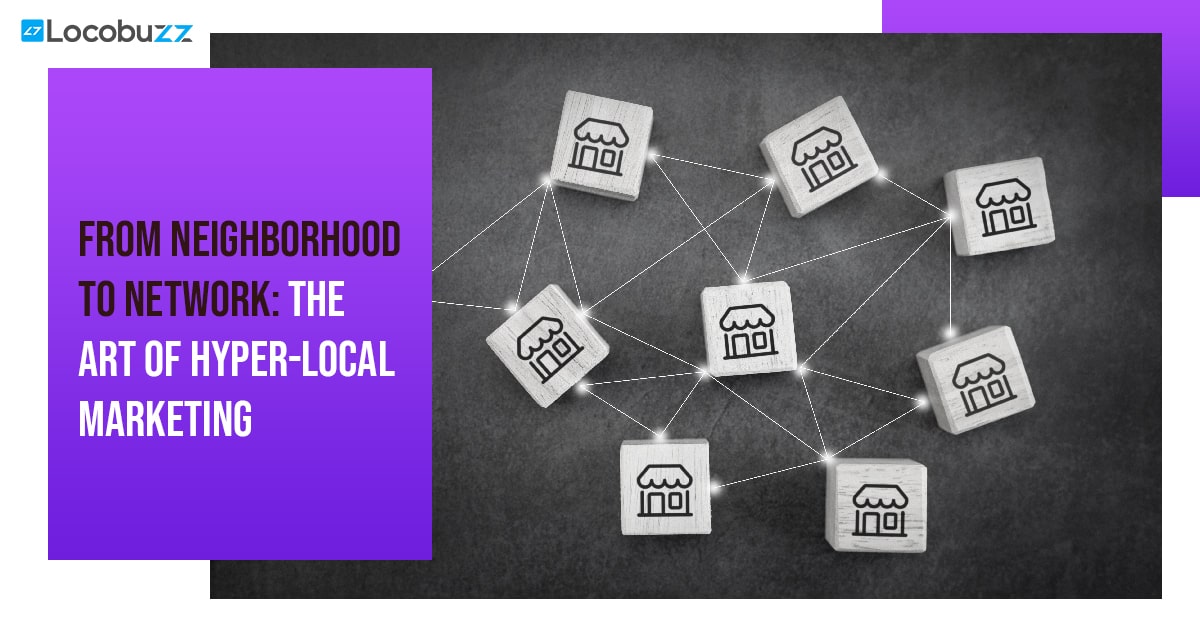5 Steps to Secure a CX Budget as the Fiscal Year Closes

This blog topic is a goldmine for engaging business leaders and managers who are eager to enhance their customer experience but might be navigating the tricky waters of budget approval.
As the fiscal year draws to a close, it’s important for businesses to allocate budgets towards enhancing the customer experience. Discover the top 5 steps to Customer Experience Budget Planning.
Customer Experience Budget Planning
Table of Contents
1. Assess and Prioritize CX Initiatives
Identifying Key Areas of Improvement in Your Customer Experience
First things first, you’ve got to play detective in your own business. This means taking a hard look at your current CX setup and asking the tough questions.
- Where are your customers most frustrated?
- What complaints are popping up time and again?
- What’s your churn rate looking like?
- What is the response time when a customer reaches out for support?
- Are they left waiting, growing more frustrated by the minute?
- How personalized is the customer experience you’re offering?
- How consistent is the customer experience across all your channels?
- Are your customers repeating themselves to multiple representatives, or is their information seamlessly passed along within your organization?
- Is the feedback from your customers being actively used to make tangible improvements, or does it feel like their concerns are disappearing into the void?
- How do your customers rate their experience with your business? Are they promoters, passively satisfied, or detractors?
Tools like customer surveys, feedback forms, and social media listening can be your best pals here. But don’t just stop there—dig into your customer service data, analyze those support tickets, and look for patterns. It’s all about finding the pain points that, if alleviated, could transform a customer’s journey from meh to memorable.
But it’s not all about fixing what’s broken. Keep an eye out for opportunities to innovate and add value to the customer experience in ways your competitors might not have thought of. Maybe it’s a smoother checkout process on your e-commerce site, a more personalized shopping experience, or a faster response time to customer inquiries. Innovation is the name of the game here.
Prioritizing Initiatives Based on Impact and Feasibility
Now, you’ve got a list of potential CX upgrades longer than a CVS receipt. Great! But here’s where the rubber meets the road: prioritization. Not all initiatives are going to give you the bang for your buck that you’re hoping for, and let’s be real—resources are finite. You’ve got to play it smart.
Impact: Start by evaluating the potential impact of each initiative. Which improvements are likely to significantly enhance customer satisfaction and loyalty? Which ones have the power to boost your Net Promoter Score (NPS), reduce churn, or increase customer lifetime value? These high-impact initiatives should bubble to the top of your list.
Feasibility: But impact isn’t the only game in town—feasibility matters too. Consider the resources required for each initiative: budget, time, and manpower. Some ideas might be gold but require a Herculean effort to implement. You need to strike a balance between the potential impact and what’s actually achievable with the resources you have. Sometimes, quick wins that are easy to implement can set the stage for more complex, long-term projects.
By meticulously assessing and prioritizing your CX initiatives, you create a focused, strategic approach to enhancing customer experience. This not only ensures that you allocate your resources wisely but also builds a compelling case for securing that all-important CX budget. After all, when you come to the table with a plan that’s both impactful and achievable, you’re much more likely to get the green light from those holding the purse strings.
And there you have it—the first crucial step to securing your CX budget. By identifying key areas of improvement and prioritizing initiatives based on their impact and feasibility, you’re well on your way to making a case that’s as persuasive as it is practical. Stay tuned for the next steps, where we’ll dive deeper into how to turn this strategic vision into a budget-winning proposal.
2. Build a Data-Driven Business Case
Gathering Concrete Data to Demonstrate the ROI of Investing in CX
First up, let’s talk about the treasure hunt—digging up the gold nuggets of data that will make your case undeniable. Here are some key metrics and data points to focus on:
- Customer Satisfaction Scores (CSAT) Net Promoter Scores (NPS), and Customer Effort Scores (CES): These metrics are direct indicators of customer satisfaction and loyalty. Showcasing improvements in these areas can directly correlate with increased revenue and reduced churn.
- Churn Rate: Illustrating how enhancements in CX can lead to a reduction in churn rates can be a powerful argument for investment. Highlighting the cost of acquiring new customers versus retaining existing ones can also add weight to your case.
- Customer Lifetime Value (CLV): Demonstrating how improving CX can increase the lifetime value of customers by encouraging repeat business and loyalty is a key data point.
- Conversion Rates: Show how specific CX improvements have led to higher conversion rates in case studies or industry reports.
- Operational Costs: Highlight data that shows how investments in CX can lead to reduced service costs, such as lower call volumes in customer support or decreased need for service recoveries.
How to Present This Data in a Compelling Way to Decision-Makers
Now that you’ve got the data, it’s time to turn it into a compelling narrative. Here’s how:
- Tell a Story: Begin with a narrative that illustrates a common customer pain point and how your proposed CX initiative can solve it. Use real customer feedback or anecdotes to make it relatable.
- Use Visuals: Charts, graphs, and infographics can make your data more digestible and impactful. Visual representations of before-and-after scenarios, potential ROI, and benchmark comparisons can make your case more persuasive.
Benchmark Against Competitors: If possible, show how your competitors are investing in CX and the outcomes they’re seeing. This can create a sense of urgency and the fear of missing out (FOMO). - Align With Business Goals: Connect the dots between CX initiatives and overarching business objectives. Show how investing in CX can drive revenue, reduce costs, or enhance brand reputation.
- Propose a Pilot: If there’s hesitation, suggest starting with a pilot project. Outline a smaller-scale initiative with clear metrics for success. This approach can demonstrate the potential ROI with minimal risk.
3. Align CX Goals with Overall Business Objectives
Demonstrating How CX Initiatives Support Broader Business Goals
To start, you need a deep understanding of your business’s core objectives. Are you looking to increase revenue, expand market share, reduce operational costs, or enhance brand reputation? Whatever those goals may be, here’s how to link them to CX:
Revenue Growth: Connect the dots between high-quality customer experiences and increased spending. Satisfied customers are more likely to become repeat buyers and brand advocates, leading to both direct sales and new customer acquisition through word-of-mouth.
Market Share Expansion: Show how superior CX can differentiate your brand in a crowded market, attracting customers from competitors and contributing to market share growth.
Operational Efficiency: Illustrate how streamlining the customer journey can lead to reduced support calls and complaints, lowering operational costs.
Brand Reputation: Highlight the impact of positive customer experiences on online reviews, social media buzz, and overall brand perception. In the age of social media, a strong reputation can be a significant competitive advantage.
Tips for Speaking the Language of Stakeholders
To get your message across, it’s crucial to speak in terms stakeholders understand and care about. Here’s how:
- Use Business Metrics: When discussing CX initiatives, frame them in terms of business metrics like ROI, CLV, and revenue growth. This makes the benefits tangible and relevant to business leaders.
- Tailor Your Message: Different stakeholders have different priorities. Customize your presentation to address the specific concerns and goals of each audience, whether it’s the CFO concerned about the bottom line or the Marketing Director looking at brand reputation.
- Highlight Competitive Advantage: Use industry benchmarks and competitor analysis to show how improved CX can serve as a competitive advantage, helping stakeholders see the urgency and importance of investment.
- Include Testimonials and Case Studies: Real-world examples of successful CX initiatives (both within and outside your company) can be persuasive, showing stakeholders the concrete benefits of investment.
Creating a Unified Vision
Ultimately, aligning CX goals with overall business objectives is about creating a unified vision that everyone can get behind. By demonstrating how CX initiatives are not just nice-to-have but essential for achieving business goals, you can turn skeptical stakeholders into enthusiastic supporters.
This step requires not only a deep understanding of CX and its impacts but also an ability to communicate effectively with various stakeholders across the business. It’s about making CX a shared priority, showing its critical role in driving the company forward.
By following these strategies to demonstrate alignment and speak the language of stakeholders, you’re well on your way to securing the necessary buy-in—and budget—for your CX initiatives.
4. Craft a Clear Implementation Roadmap
Outlining a Step-by-Step Plan
Define the Scope: Start with a clear definition of what the CX initiatives encompass, outlining the specific areas of focus (e.g., digital transformation, customer support enhancement, personalization efforts).
- Break Down the Initiatives: Divide the overall CX enhancement effort into smaller, manageable projects or phases. For each, detail the specific actions needed, resources required (including personnel, technology, and materials), and the expected impact on customer experience.
- Assign Responsibilities: Clearly identify who will be responsible for each task or phase. This ensures accountability and helps prevent tasks from falling through the cracks.
- Set Realistic Timelines: For each project or phase, establish timelines that are ambitious yet achievable. Consider the complexity of tasks, the availability of resources, and any dependencies between projects.
- Including Timelines, Milestones, and Expected Outcomes
- Timelines: Use a Gantt chart or a similar tool to visually represent the start and end dates of each project or phase, along with any overlapping activities. This helps stakeholders understand the sequence of actions and how long each step will take.
- Milestones: Identify key milestones within your roadmap. These are significant points that mark the completion of major phases or the achievement of important objectives. Milestones help to track progress and can serve as points for review and adjustment.
- Expected Outcomes: For each phase or project, clearly articulate the expected outcomes in terms of CX improvements. Quantify these outcomes wherever possible (e.g., expected increase in NPS, reduction in customer support response times, increase in customer retention rates). Linking these outcomes to the overarching business objectives will further underscore the value of the CX initiatives.
Presenting Your Roadmap
When presenting your roadmap to stakeholders, focus on:
Clarity: Ensure your roadmap is easy to understand, with a clear flow and logical progression from one phase to the next.
Justification: For each step or phase, explain why it’s necessary and how it contributes to the overall CX enhancement goal.
Flexibility: Acknowledge that while the roadmap is your planned course of action, you’re prepared to adapt based on feedback and evolving business needs. This shows foresight and adaptability.
Creating a unified vision with your roadmap
Your implementation roadmap is not just a planning tool; it’s a communication device that brings your CX vision to life for stakeholders.
By meticulously detailing the steps, timelines, milestones, and expected outcomes, you paint a vivid picture of what’s to come and how it aligns with both CX and broader business goals. It’s about showing that you’re not just asking for resources but that you have a concrete, actionable plan to use them wisely.
With a clear implementation roadmap in hand, you’re in a strong position to secure the necessary budget and support for your CX initiatives, demonstrating not only the strategic importance of these efforts but also your commitment to driving measurable results.
5. Use Success Stories and Case Studies
Success stories and case studies are powerful tools for several reasons. They:
- Provide Evidence: They offer concrete examples of how CX investments have led to improved customer satisfaction, increased loyalty, and tangible business growth.
- Inspire Confidence: Showing the successes of similar businesses or past projects within your own organization can help alleviate concerns about the feasibility and potential return on investment of proposed CX initiatives.
- Facilitate Relatability: Real-world examples help stakeholders envision the potential outcomes of the investment in a more tangible way, making the benefits more relatable and compelling.
How to Find and Choose the Most Impactful Stories
- Look Within Your Organization: Start by identifying any previous CX improvements your company has implemented. Even small-scale successes can be compelling if they show clear results. Gather data and testimonials related to these initiatives to build your internal case studies.
- Industry Benchmarks and Competitors: Research case studies from within your industry, especially those from direct competitors or market leaders. Highlighting how similar investments have paid off for others in your field can be a strong motivator.
- Partner with Vendors: If you’re proposing investments in specific technologies or services, reach out to potential vendors for case studies or success stories related to their solutions. These organizations often have well-documented examples that can support your case.
- Criteria for Selection: When choosing which stories to leverage, consider:
- Relevance: Select stories that are closely related to the CX initiatives you’re proposing.
- Outcome-Focused: Look for examples with clear, quantifiable outcomes, such as increased revenue, higher customer satisfaction scores, or reduced operational costs.
- Storytelling Potential: Choose stories that are not just about numbers but also offer a narrative about the challenge, solution, and impact. A compelling narrative can be more persuasive than statistics alone.
Presenting Your Selected Success Stories
When incorporating these success stories and case studies into your proposal:
- Contextualize Each Story: Briefly set the stage for why each example is relevant to your proposed initiatives. Make the connection clear between the story and your plans.
- Highlight Key Outcomes: Focus on the most impactful results from each case study. Use visuals like charts or graphs to make these outcomes stand out.
- Draw Parallels: Explicitly connect the dots between the success stories and the potential for similar outcomes in your organization. Use phrases like, “By implementing a similar approach, we can expect to see…” to draw these parallels.
- Address Anticipated Objections: Use these stories to proactively address any potential objections or concerns stakeholders might have. Show how risks were managed or mitigated in these examples.
How Locobuzz Fulfills the Needs of Modern CX Management
- With the power of artificial intelligence (AI), Locobuzz enables businesses to deliver personalized customer experiences at scale. AI-driven insights help understand customer preferences and behaviors, allowing for tailored communications that resonate with each individual. This level of personalization fosters a deeper connection between brands and their customers, enhancing loyalty and encouraging repeat business.
- Locobuzz’s predictive analytics capabilities allow businesses to anticipate customer needs and address issues before they escalate. By analyzing patterns and trends in customer data, businesses can identify potential pain points and proactively reach out to customers with solutions. This preemptive approach to customer service not only improves customer satisfaction but also reduces the volume of incoming support requests.
- Data is at the heart of effective CX management, and Locobuzz provides businesses with the insights needed to make informed decisions. From sentiment analysis to customer journey mapping, the platform offers a range of analytics tools that help businesses understand their customer base better. These insights can inform strategy adjustments, ensuring that CX initiatives are always aligned with customer needs and expectations.






















